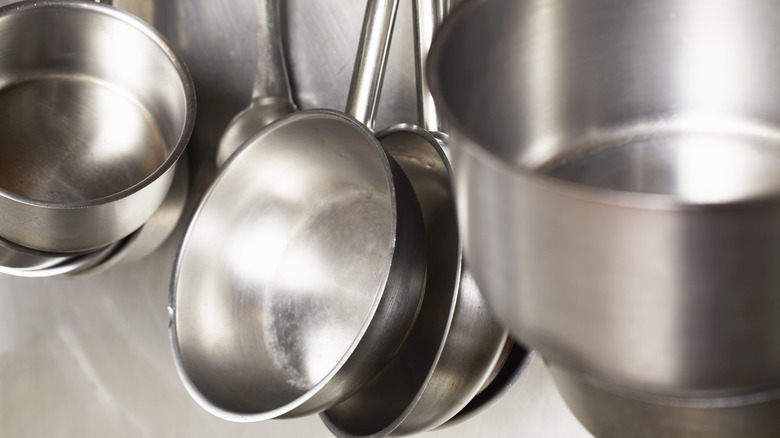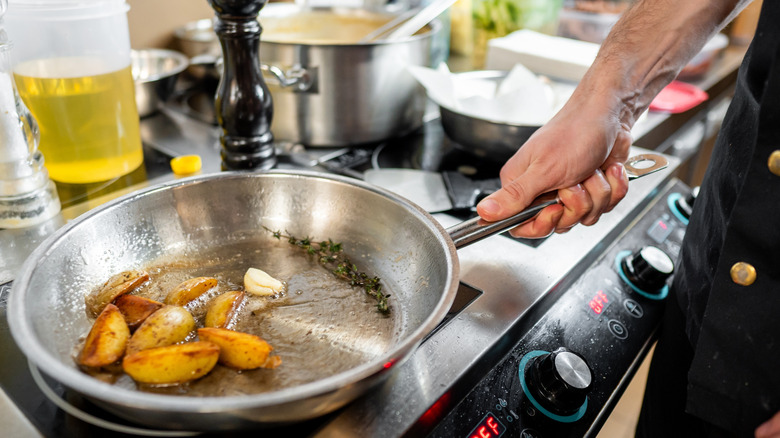Make Sure Your Stainless Steel Pan Is Nonstick With One Simple Test
There's nothing more frustrating than spending an entire afternoon preparing a juicy filet mignon just to have it stick and poorly sear the moment it touches your stainless steel pan. Unfortunately, you can't blame the pan for that disaster –- it's all on you. You might have forgotten (or not known at all) that to make a stainless steel pan nonstick, you have to prep the pan. Many people run into challenges getting their stainless steel cookware to behave as nonstick, but if you use the extraordinarily simple water test there are plenty of nonstick cooking days in your future.
If that stainless steel beauty on the stovetop isn't heated and properly oiled before you toss down the food, there's no guarantee that it's going to perform its nonstick duties. The easiest way to tell if the pan is hot enough for seasoning (and eventually cooking) is what experts call the "water test." Begin by turning on the burner and allowing the pan to heat up. After a little while, flick a few droplets of water onto the pan and observe their behavior. See how the droplets evaporate into smoke the moment it touches the pan? That means the pan isn't quite ready. When the water droplets congeal into one little ball, slide around the pan, and then slowly evaporate, then the pan is hot enough for oil.
Why does food stick to stainless steel and how can you prevent it?
Stainless steel is a porous material full of microscopic holes that widen once heated. The water test is a visual cue that the pores of the steel have expanded and the temperature of the pan has reached a sweet spot. When a cold piece of food comes into contact with the hot, expanded pores (with no barrier between the two) those little holes close faster than a Venus fly trap, causing food to stick. This is why seasoning the pan (using the water test) is incredibly important. The oil will fill the pores and create a temporarily smooth surface, rendering your stainless steel cookware nonstick.
Several other mistakes can cause food to stick to your stainless steel cookware, such as overheating or underheating the pan. Although stainless steel isn't typically advertised as being a big commitment, taking care of your cookware will only lead to better results. Why risk a fried egg that won't peel off the pan when you can just spray a few drops of water to gauge the perfect cooking temperature for seasoning?

